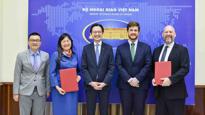

Overview of the Regional Comprehensive Economic Partnership
The Regional Comprehensive Economic Partnership (RCEP)’s negotiations were formally launched in 2012 according to an initiative of ASEAN member countries, in order to encourage trade cooperation between ten ASEAN member countries and six initial partner countries, which were Australia, China, India, Japan, New Zealand and the Republic of Korea. The objective of the RCEP is to promote “mutual benefits and win-win”. However, in November 2019, India withdrew from the RCEP’s negotiations, which reduced the number of RCEP signatories from 16 to 15. In November 15th 2020, after eight years with 31 rounds of negotiation, 15 meetings of RCEP Trade Negotiating Committee Meeting and 19 rounds of RCEP Intersessional Ministerial Meeting, the RCEP was formally signed at the virtual ASEAN Summit hosted by Vietnam.